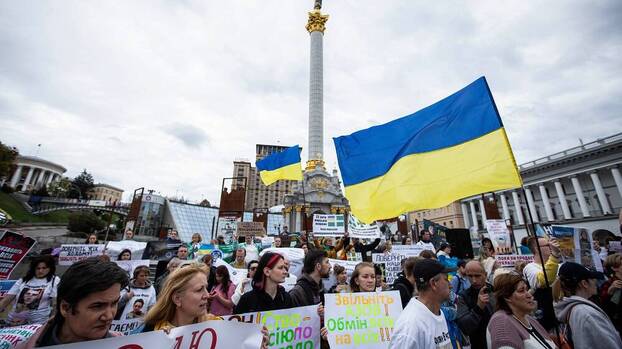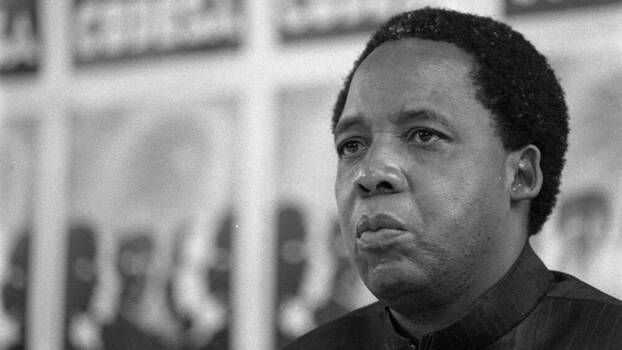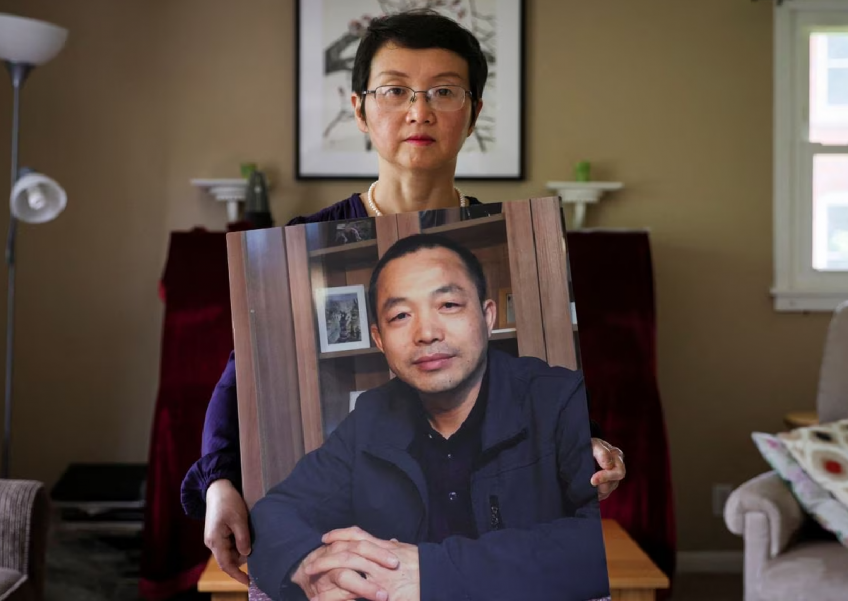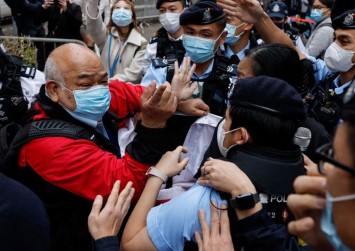Vincent Bevins on how the West’s violent anti-communist crusade shaped our modern world
AUTHORS
Vincent Bevins, Loren Balhorn
Vincent Bevins reported on Southeast Asia for the Washington Post after working as Brazil correspondent for the Los Angeles Times and the Financial Times. The Jakarta Method is his first book.
NEWS | 03/27/2023
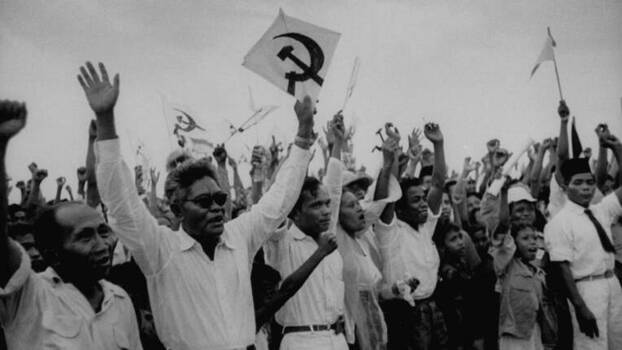
The Russian invasion of Ukraine appears to mark the definitive end of the post-Cold War order. The attack has reinvigorated a once seemingly “braindead” NATO, which has demonstrated remarkable unity in enacting sanctions against Russia and supplying Ukraine with billions of dollars of weapons to defend itself, and helped the United States to overcome the stain of the wars in Iraq and Afghanistan. Meanwhile, Moscow is reaching out to China, India, and other allies in the name of building a “multipolar” world free of US domination — and leaving the West more isolated than ever.
In the face of this widening geopolitical gulf, a number of commentators have invoked the spectre of a “new Cold War” in which the West, led by Washington, defends the principles of freedom and democracy against creeping authoritarianism around the world. The United States and NATO may not be perfect, they argue, but, as was the case last century, are infinitely preferable to the dictatorships on the other side of the new Iron Curtain.
Comforting as such a teleological view of history may be, one of its many problems is that it fundamentally misconstrues who the aggressor in the Cold War actually was. For most of the world, the first four decades after World War II were characterized not by the struggle between socialism and capitalism or the US and the Soviet Union, but by a global anticommunist crusade to strangle any and all attempts at democracy and national sovereignty outside the narrow bounds permitted by the American foreign policy establishment.
Vincent Bevins’s 2020 book, The Jakarta Method: Washington’s Anticommunist Crusade and the Mass Murder Program That Shaped Our World, which appeared in German in January of this year, is an insightful and original history of that era. Beginning with the Indonesian genocide in the mid-1960s, when the Indonesian Army slaughtered over 1 million Communists with US backing and plunged the country into decades of dictatorship, he lays out the West’s global campaign of violence during the Cold War and how it shaped the world we live in today.
Yet, The Jakarta Method is more than just another litany of atrocities — it’s an empathetic engagement with the hopes and dreams of a generation that lived through these events. Vincent Bevins sat down with the Rosa Luxemburg Foundation’s Loren Balhorn to talk anticommunist violence, German complicity, and the dream of another world that violence sought to suffocate.
You’ve covered international politics as a journalist for years. What compelled you to write a book about the history of the Cold War?
I arrived in Jakarta in 2017 to write about Southeast Asia for the Washington Post — standard mainstream journalism for a big US outlet. Yet, I found that wherever I looked, whatever I tried to do, this big, untold story lurked right beneath the surface. You could not do the job of correspondent without looking at the tragedy and unresolved trauma of the 1965 mass murder in Indonesia.
Since I had experience in Latin America, knew the languages, and had sources, I thought one way to approach the event was from a global perspective. The more I looked at it in that way, the more I became convinced that it was one of the most pivotal events of the twentieth century.
Your story centres on what you call the “Jakarta Method” of US foreign policy in the decades after World War II. What was that method exactly and how did it spread around the world?
What I call the “Jakarta Method” is the intentional mass murder of leftists or people accused of being leftists, usually in the service of the construction of authoritarian capitalist regimes, and usually carried out with some degree of support from the North Atlantic powers. The phrase “Jakarta Method” is actually a translation of several terms in Portuguese and Spanish — Operação Jacarta, Plan Yakarta, or just Djakarta — that were used by far-right movements allied with Washington in the Cold War.
Quite simply, they learned about what happened in Indonesia and took inspiration from it. This process was facilitated by a robust network of anticommunist organizations around the world. In the second half of the twentieth century, I found at least 23 countries in which this kind of mass murder was carried out.
You write in the book that Indonesia and the events that happened there in the mid-1960s constitute a “huge gap in our collective general knowledge, even among people who do know a little about the Cuban Missile Crisis, or the Korean War, or Pol Pot”. Why is that?
Well, in the dominant narrative, especially here in the North Atlantic, the Cold War happened between the First and Second Worlds. But if you care about every human being on the planet — and recent scholarship like Norwegian historian Odd Arne Westad’s work has increasingly taken this position, too — the Cold War more properly took place between the First and Third World, with the First World as the aggressor.
Not only did the Communist organizational model offer a very handy way to carry out the national liberation struggle, but the example of the Soviet Union offered a possible path to actually catch up with the economies of the First World.
Approximately 1 million people were killed in Indonesia — now the world’s fourth-largest country by population, and the world’s largest Muslim-majority country. A leading country of the progressive non-aligned Third World Movement flipped from the anti-imperialist, left-leaning camp to the solidly anticommunist, pro-Western camp and the largest unarmed socialist party on the planet was destroyed basically overnight. It was a very big deal.
To answer the question of how this process of historical forgetting took place, we have to give multiple answers. One is that the Suharto dictatorship that rose to power was very successful in consolidating its regime and imposing its own version of history. Another is that Vietnam came to dominate Cold War politics in Asia, at least in the popular Western imagination, because our attention to faraway regions is often limited and because it became a domestic issue in the United States. At the time, however, everyone in the US foreign policy establishment agreed that Indonesia was more important than Vietnam.
Finally — and this is the most difficult answer to confront — I think that the truth of what happened contradicts so violently our perceived notions of how globalization took shape, of how our current order was created, that it has been easier to simply ignore it.
There’s a great scene in the book where India’s first prime minister, Jawaharlal Nehru, tells a young John F. Kennedy that Communism gave the people of the Third World “something to die for”. How can we understand Communism’s global appeal at that time? What did it mean to citizens of postcolonial nations, and how deeply did these ideas penetrate into the wider population?
To a large extent, The Jakarta Method is about the dream of the world that so many people believed was possible in the 1950s and 1960s, and what happened to it. In Indonesia, for example, we know from declassified CIA and MI6 files that both of these organizations believed that, if free and fair elections were to take place after 1958, the — moderate and unarmed — Communist Party of Indonesia, or PKI, would have won.
Communism had significant appeal in the Global South after decolonization, and Marxist-Leninist forces often played a crucial role in the fight for independence. This was the case in Indonesia, where the national liberation movement often consisted of an alliance of Communist, Muslim, and nationalist forces.
Not only did the Communist organizational model offer a very handy way to carry out the national liberation struggle, but the example of the Soviet Union offered a possible path to actually catch up with the economies of the First World — something that happened in almost no Global South country that stayed in the so-called “Free World”, the group of pro-Western capitalist nations, whether they chose to join, or were violently forced into it. Obviously, if Communism did not have such wide appeal in the Third World, there would have been no need to fight it so relentlessly, and there would be no “Red China”, or socialist Vietnam, etc.
Communist parties outside Europe were often quite small outfits, dependent on their links to Moscow. Indonesia, on the other hand, had a real mass party with an independent political line. How did the PKI emerge and what conditions enabled Communism to become such a powerful force there?
Sometimes that was the case, sometimes it was not. Not in China, for example, and the Indonesian Communist Party is older than the Chinese Communist Party. The PKI is older than the Russian Revolution.
The PKI had deep roots in the independence movement, and after a brief power struggle within the revolutionary war, when the Dutch tried to re-conquer the archipelago after World War II, just as France tried to re-conquer Vietnam, the Indonesian Communist Party threw itself into democratic politics and outreach to broad segments of society.
West German documents now indicate that the government knew what was going on from the beginning.
The party wasn’t only powerful within the budding workers’ movement and popular with small-scale farmers, they also had incredibly popular cultural organizations — they might put on the most interesting entertainment in your village, depending on where you lived — and a massive women’s organization, the “Gerwani”. That may have been one of the largest feminist organizations in the world at the time, and were singled out for special hatred and accusations by the insurgent anticommunist forces in 1965.
Again, declassified Western documentation is revealing. In the 1950s, Western intelligence agencies were worried precisely because they knew that the PKI was not tricking or coercing people into giving them power — they were seen as the least corrupt party, and were simply growing in popularity. The PKI leadership, for their part, thought their popularity would be enough to protect them.
We know about the atrocities committed by the US and its proxies in Vietnam and Chile, but you argue that most of the world remains oblivious to the extent of the violence in Southeast Asia in particular. Did you find anything particular shocking while writing the book?
In Bali, for example. This island was probably home to the worst mass murder, at least on a per capita basis. Perhaps 5 percent of Balinese people were killed.
Locals there now interact with all kinds of foreign tourists who fancy themselves quite knowledgeable about international affairs and may have visited the killing fields in Cambodia on an earlier stop on the backpacking trail. But in Bali, they often stay in beach resorts literally built on mass graves. Balinese locals report that these kinds of tourists almost never have any idea what happened on that island.
You paint a picture of a coherent anticommunist agenda by the 1950s, broadly shared by US elites and their global allies, determined to politically — and, if necessary, physically — neutralize socialist and other progressive movements around the world. Given how much weaker the Left has become since, does anticommunism as an ideology have any influence or use today?
I think it has influence precisely because it is useful. Take Bolsonarismo, for example, an ideology that returned with violent force to Brazil, where I have mostly lived since 2010. Deploying the fantastical threat of some kind of possible rebellion from below, stirring up fear of an internal enemy, has not gone away because it works. Far-right movements from Asia to Europe to the Americas reach for these ideological remnants because they are effective.
Your book shows how the US and, to a lesser extent, the USSR sought to influence and directly intervene in the process of decolonization, with struggles for independence at risk of becoming “proxy wars” for one side or the other. What does your book tell us about how great power rivalries and regional conflicts interact?
The largest lesson that emerges for me is that, in 1945, the US found itself by far the most powerful country in the world. Foreign policy officials in Washington looked out on a world system that had been shaped by centuries of formal European colonization. At that point, the relatively young nation seemed to be at a crossroads: was it going to remain true to its putative revolutionary and anti-colonial ideals, or would it fall back on practices more in line with its own imperialist expansion across North America?
If you want to understand where this global system actually comes from, you have to understand how these processes worked.
It may seem now that it would always take the second path, but leaders like Sukarno and even Ho Chi Minh didn’t know which way Washington was going to go. They appealed to Washington hoping to build friendship. I think the “Jakarta Method” is only one of many tools and tactics it developed in the second half of the twentieth century to shape outcomes in the Global South, and maintain the same general relations between North and South that had been shaped by colonialism, without recourse to formal colonial control.
Another major theatre of your book is the 1964 military coup in Brazil, an era that Jair Bolsonaro celebrates as a “very good” time in the country’s history. How grave is the threat to Brazilian democracy today given events like the riot by Bolsonaro supporters in the capital on 8 January? Could the Jakarta Method make a comeback?
One of Jair Bolsonaro’s most famous declarations before his arrival as a real electoral force in 2016–2018 was to say that the dictatorship had not killed enough people, and that Brazil could only advance as a country if it killed tens of thousands more. Now, of course, he did not manage to actually consolidate dictatorial control, for a number of reasons that I outlined last year in the New York Review of Books, but he certainly represents the return of the Cold-War-era, violently anticommunist ideological project. What happened on 8 January was one clear sign of what was already obvious before his final election loss: Bolsonarismo will continue to be a political force, even without Jair Bolsonaro in the presidency.
You’ve done a number of events in Germany over the last few weeks highlighting West Germany’s complicity in the massacres. Does the German government harbour some guilt for what happened back then?
Some of the Indonesian death squads were inspired by Nazism. Nevertheless, I focused primarily on the role of the United States — we now know that the Indonesian Army did what it did to a large extent because of US influence. Washington supplied material support, crucial encouragement, and one embassy employee later admitted that the US government handed over lists to the Indonesians of people to be killed.
West German documents now indicate that the government knew what was going on from the beginning — one Indonesian general requested financial help from Bonn to help carry out anticommunist operations during the massacre, and one former SS officer, in Indonesia since 1959, helped to promote Suharto’s image abroad.
I have been honoured that Sri Tunruang from the International People’s Tribunal has supported the launch of the book in Germany, and that the very large Indonesian survivor community has helped so much. This week, Sri Tunruang and I will present testimony in the German parliament at the invitation of the Committee on Human Rights and Humanitarian Aid. My concern is not with assigning blame or even really with Germany at all. What matters is to me is that the vast majority of the survivor community in Indonesia and their tens of millions of relatives have all been denied any kind of justice. There has never even been recognition that what happened to them was not their fault.
Very unlike the situation in Latin America, there has never been anything like a Truth and Reconciliation Committee in Indonesia. There is still a “Museum of Communist Treachery” in central Jakarta. The survivor community badly needs support — most survivors live in poverty and marginalized from society, still stigmatized by the accusations hurled at them in 1965–66. During the pandemic, we often turned to raising money on Twitter to pay for things like rice and basic medical care for people who spent much of their lives in concentration camps.
My focus for the book was on the role of the US, but I want to push as widely as possible for recognition of what happened. If Germany can come out and be more honest about what happened behind the scenes in that horrible period, it might put more pressure on other governments like the US, Indonesia, and Britain to move closer towards something like transparency, and that could matter to quite a lot of people.
Your book emphasizes how little most people in the West know about the violence inflicted on the Global South throughout the twentieth century. Do you think we, i.e. people living in the countries that “won” the Cold War, have a kind of moral responsibility to learn more about this history?
I suppose that no one has a responsibility to learn about anything these days, but I would not point to guilt or moral duty as a reason to study these phenomena. There are far better reasons. If you want to understand where this global system actually comes from and you are interested in analysing the ways that it can be changed, you have to understand how these processes worked. In that sense, learning about them is not only interesting from a historical point of view, it empowers us to better act upon the world as it currently exists.
